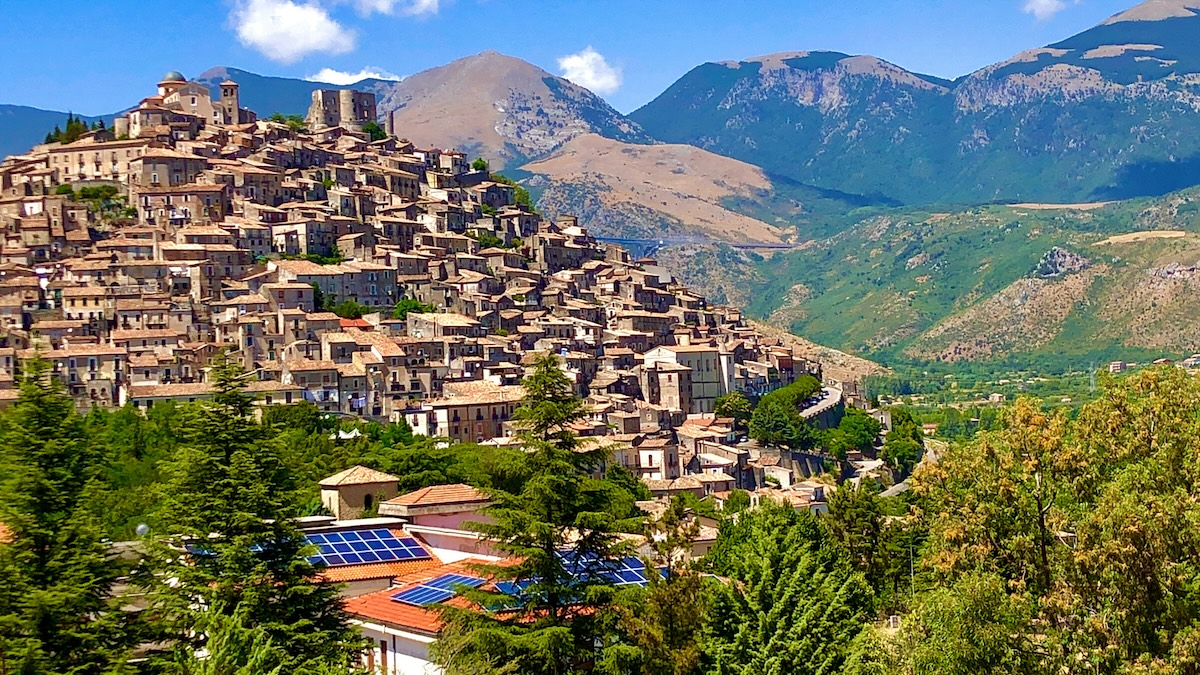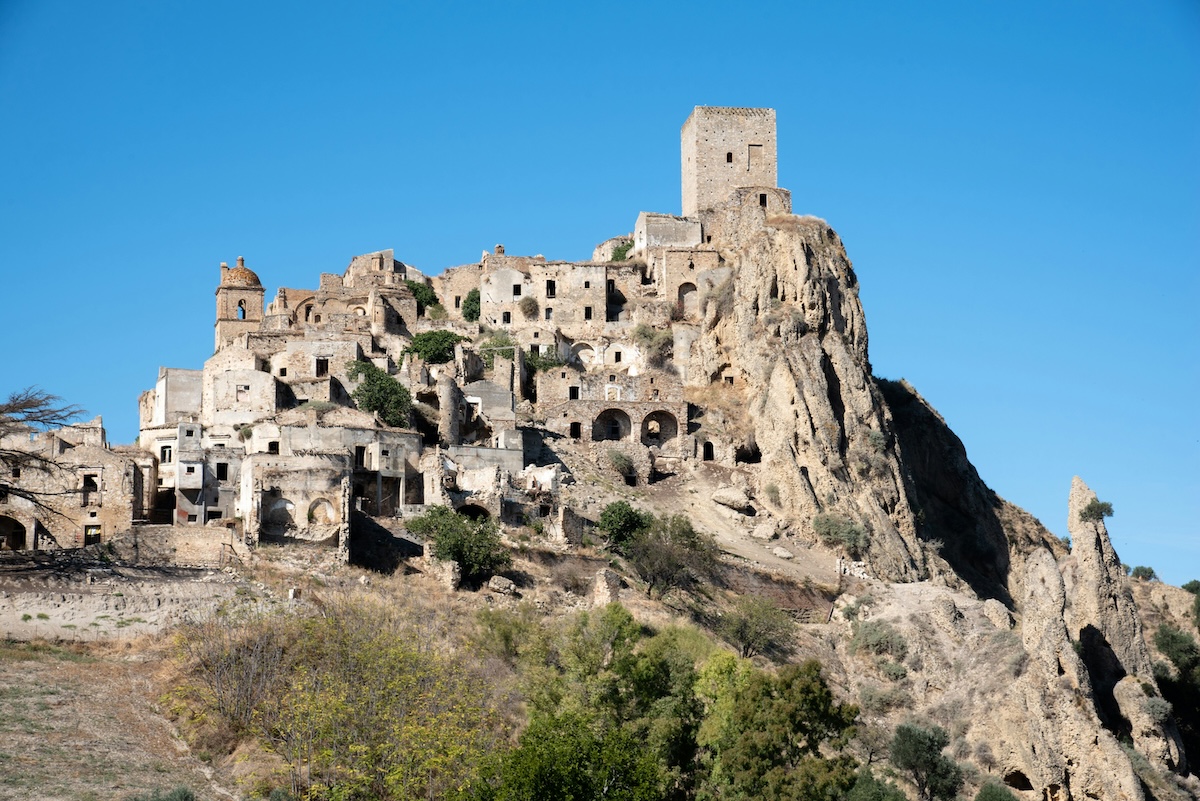By: Heather Keys
Skip to...
Basilicata, a region in southern Italy, is one of the country’s less traveled areas, but is home to some of the planet’s oldest settlements. From ancient cave dwellings to Greek ruins and natural parks, the region offers many experiences reflecting its historical depth and geographical diversity.
Let’s take a quick tour of the scenic villages and significant landmarks that define Basilicata’s landscape and history.
Matera
Matera is most famous for its historical Sassi districts—Sasso Caveoso and Sasso Barisano. These areas feature ancient cave dwellings that contribute to Matera’s status as a UNESCO World Heritage site and one of the oldest inhabited cities globally. The city includes numerous rock churches, which, together with the Sassi, provide insights into historical living conditions and architectural practices.
Castelmezzano and Pietrapertosa
These are two hilltop villages located within the Dolomiti Lucane. They are linked by the Volo dell’Angelo, a zipline that you must try out if you want a truly unique way to travel between points A and B, and, of course, gorgeous views along the way! Castelmezzano, in particular, has been recognized as one of Italy’s most beautiful villages.
Maratea

Photo by Anastasia Pirri on Unsplash
Maratea, a coastal town, is a fantastic place to visit if you’re interested in beaches and the outdoors. There are over 20 beaches here, and because it’s not the most tourist-heavy area, you can find gorgeous spots to relax and enjoy nature without the hustle and bustle of crowds.
The town is noted for its dozens of churches and its Christ the Redeemer statue, which is situated on Mount San Biagio. This statue is a significant landmark, visible throughout the town and the surrounding areas—it’s actually the tallest statue in Italy. Maratea’s coastal and mountainous landscapes contrast the historical and cultural elements represented by the statue.
Craco
The ghost town of Craco was evacuated following a series of landslides starting in the 1960s and totally abandoned in the 1980s after the Irpinia earthquake. Despite this, many of the town’s medieval and Renaissance structures remain largely intact, and these buildings allow for the study of architectural styles and urban planning of the period. You can take a guided tour of the city center and historic areas, or if you’re traveling solo, you can get close to the ancient zone without going in.
Metaponto and Policoro
Metaponto and Policoro are recognized for their contributions to understanding ancient Greek civilization in southern Italy. These towns contain remnants of temples, theaters, and other structures that demonstrate the architectural and cultural influence of ancient Greece. The archaeological museums in both towns display artifacts and provide context for the region’s historical development. Plus—of course—there are beautiful beaches all along these coastal towns.
Other Areas of Interest in the Basilicata Region

Photo by Serena Repice Lentini on Unsplash
Appennino Lucano – Val d’Agri – Lagonegrese National Park
This national park is excellent for outdoor activities such as hiking and bird watching. It’s also the youngest national park in Italy!
Monticchio Lakes
These lakes are situated within the crater of the extinct Vulture volcano. The area around the lakes is characterized by forested regions, which contribute to the scenic quality of the landscape.
Venosa
Venosa holds historical significance as the birthplace of the Roman poet Horace. The town’s archaeological sites, such as the Roman amphitheater and baths and the unfinished Abbey of the Most Holy Trinity, offer insights into various historical periods and architectural styles. These sites allow for exploring Roman and early Christian influences in the region.
Senise
Senise is known for producing the peperone crusco, a local pepper used in various dishes. Nearby, the Lago di Monte Cotugno is recognized as one of the largest earth dams in Europe. This area combines agricultural traditions with modern engineering achievements, contributing to the local economy and landscape management.
Exploring Basilicata provides insight into Italy’s multifaceted historical and natural environments. The region’s villages, archaeological sites, and natural reserves offer visitors a chance to engage with Italy’s past and present outside the more frequented tourist destinations.
Have you had the opportunity to visit this region? Share your stories and advice with the Frayed Passport community!
About the Author
Heather is a freelance writer who loves exploring the intersection of travel and history. Read her other articles on Frayed Passport here.
Featured image by Luca Micheli on Unsplash

